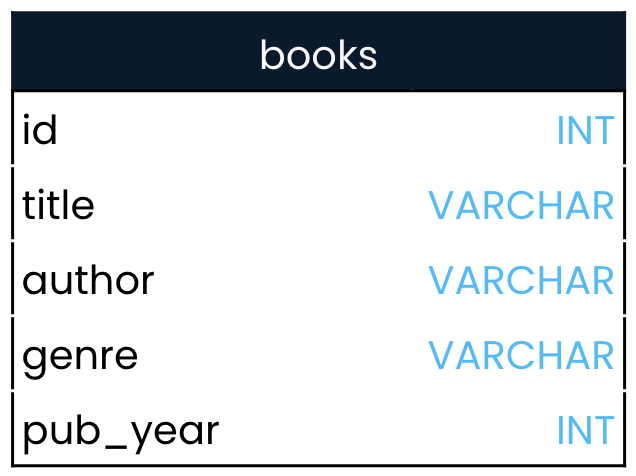Chapter 23 Introduction to SQL
23.1 Relational Databases
23.1.1 Databases
Relational databases
- Define relationships between tables of data inside the database
Database advantages
More storage than spreadsheet applications
Storage is more secure
SQL
Short for Structured Query Language
The most widely used programming language for databases
23.1.2 Tables
Tables
Table rows and columns are referred to as records and fields
Fields are set at database creation; there is no limit to the number of records
Table names:
lowercase
no spaces — use underscores instead
refer to a collective group or be plural
Table: fields
A field is a column that holds one piece of information about all records
Field names:
lowercase
no spaces — use underscores instead
singular
different from other field names
different from the table name
key
Unique identifiers are used to identify records in a table
They are unique and often numbers
23.2 Querying
23.2.2 Writing queries
23.2.2.1 DISTINCT
DISTINCT keyword can be used to return unique values in a field.
There are 350 books in the books table, representing all of the books that our local library has available for checkout. But how many different authors are represented in these 350 books? The answer is surely less than 350. For example, J.K. Rowling wrote all seven Harry Potter books, so if our library has all Harry Potter books, seven books will be written by J.K Rowling.
-- Select unique authors from the books table
SELECT DISTINCT author
FROM books
-- Select unique authors and genre combinations from the books table
SELECT DISTINCT author, genre
FROM books;You found 247 unique authors in the books table overall but 249 unique combinations of authors and genres. This means there are one or two authors who have written books in multiple genres!
23.2.2.2 AS
Use aliasing to rename columns.
-- Alias author so that it becomes unique_author
SELECT DISTINCT author AS unique_author
FROM books;23.2.2.3 VIEW
A view is a virtual table that is the result of a saved SQL
SELECTstatementThe query code is stored for later use.
-- Save the results of this query as a view called library_authors
CREATE VIEW library_authors AS
SELECT DISTINCT author AS unique_author
FROM books;
-- Select all columns from library_authors
SELECT *
FROM library_authorsAs your SQL queries become long and complex, you’ll want to be able to save your queries for referencing later. Views can also be useful when the information contained in a database table isn’t quite what you need. You can create your own custom view with exactly the information you are looking for, without needing to edit the database itself
23.2.3 SQL flavors
Two popular SQL flavors
PostgreSQL
Free and open-source relational database system
“PostgreSQL” refers to both the PostgreSQL database system and its associated SQL flavor
SQL Server
Has free and paid versions
Created by Microsoft
T-SQL is Microsoft’s SQL flavor, used with SQL Server databases
Comparing PostgreSQL and SQL Server
PostgreSQL:
LIMIT 2SQL Server:
TOP(2)
